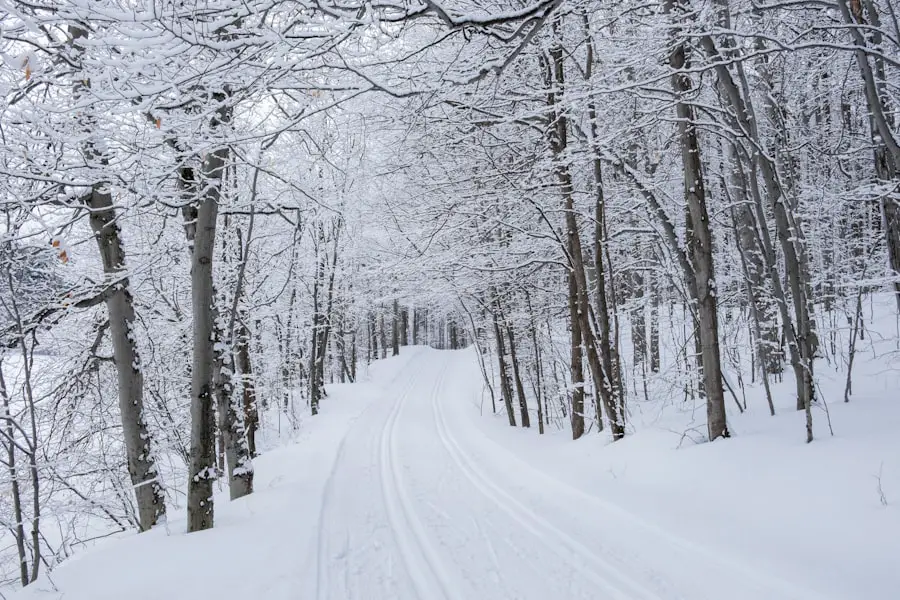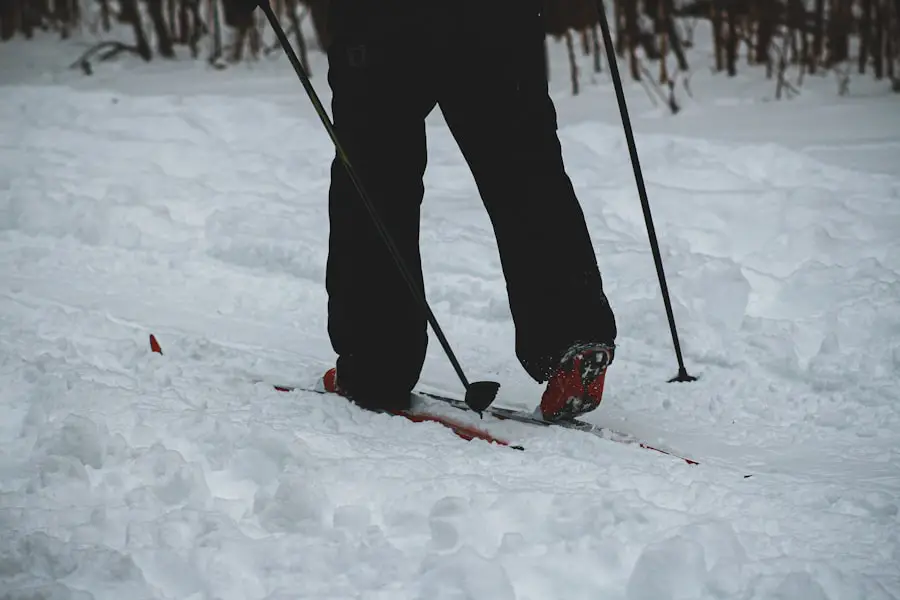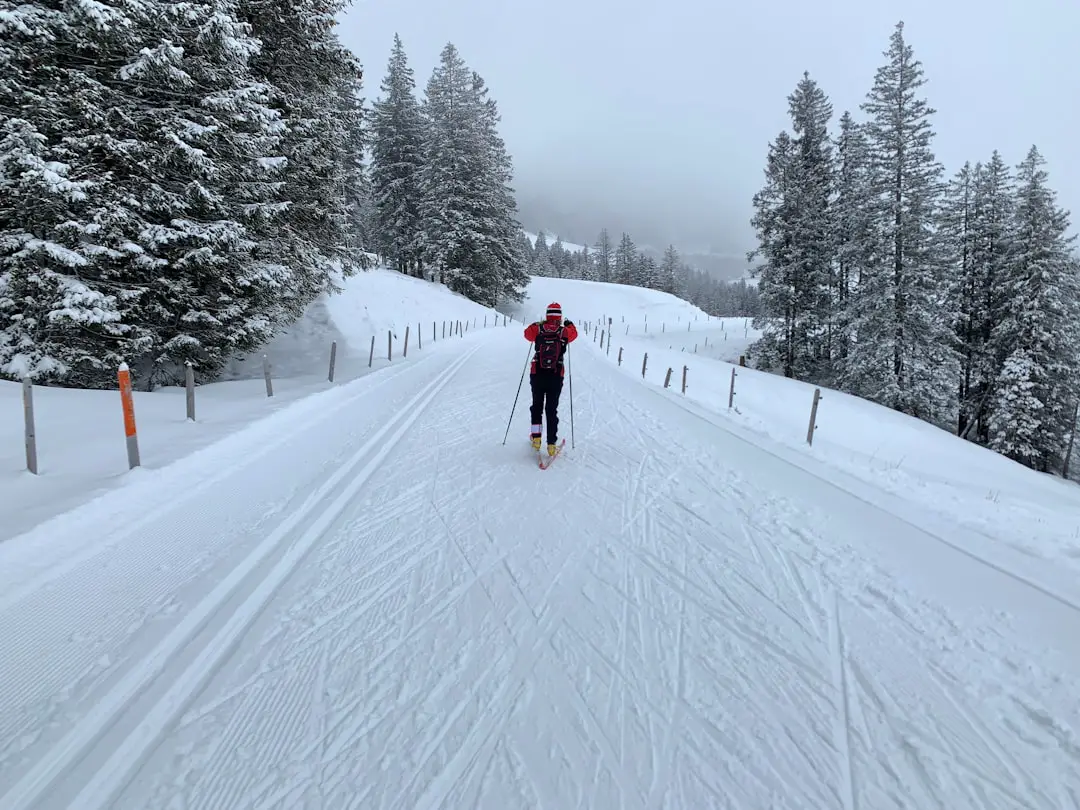Hiking poles, often associated with trekking and mountain hiking, have found their way into the skiing community, offering a unique blend of support and versatility on the slopes. Traditionally, ski poles have been the go-to equipment for skiers, providing balance and rhythm during descents. However, the increasing popularity of hiking poles in skiing is reshaping how enthusiasts approach the sport.
These poles are designed to be lightweight, adjustable, and often feature ergonomic grips, making them an appealing alternative for skiers looking to enhance their experience on the mountain. The integration of hiking poles into skiing practices is not merely a trend; it reflects a deeper understanding of biomechanics and the physical demands of skiing. As skiers navigate varied terrains, from groomed runs to backcountry trails, the need for stability and support becomes paramount.
Hiking poles can offer a different level of engagement with the environment, allowing skiers to maintain balance while also providing propulsion during uphill climbs. This article delves into the multifaceted benefits of using hiking poles for skiing, exploring their impact on stability, balance, and overall performance.
Key Takeaways
- Hiking poles can provide stability and balance while skiing, making them a valuable tool for skiers of all levels.
- Using hiking poles for skiing can help improve uphill climbs and enhance the experience of cross-country skiing.
- When choosing hiking poles for skiing, it’s important to consider factors such as material, weight, and grip type to ensure they meet your specific needs.
- Proper technique is essential for effectively using hiking poles while skiing, including timing and placement for maximum benefit.
- While hiking poles can offer numerous benefits for skiing, it’s important to be aware of potential drawbacks and consider how they compare to traditional ski poles.
Benefits of Using Hiking Poles for Skiing
One of the primary benefits of using hiking poles for skiing is the enhanced stability they provide. Skiing inherently involves navigating uneven surfaces and varying snow conditions, which can challenge even the most experienced skiers. Hiking poles can serve as an additional point of contact with the ground, allowing skiers to distribute their weight more evenly and maintain better control over their movements.
This is particularly beneficial in challenging conditions such as icy patches or deep powder, where maintaining balance is crucial. Moreover, hiking poles can significantly reduce fatigue during long skiing sessions. By utilizing upper body strength in conjunction with leg muscles, skiers can distribute the physical demands of skiing more evenly across their bodies.
This not only helps in maintaining endurance but also allows skiers to engage in longer runs without succumbing to exhaustion. The ergonomic design of many hiking poles ensures that they are comfortable to grip and easy to maneuver, further enhancing the overall skiing experience.
How Hiking Poles Can Improve Stability and Balance on the Slopes

The role of hiking poles in improving stability cannot be overstated. When skiing, especially on challenging terrain or during turns, having an extra point of contact can make a significant difference. Skiers can use hiking poles to gauge their balance and adjust their weight distribution as needed.
For instance, when making sharp turns or navigating through moguls, planting a pole can help stabilize the body and prevent falls. This added stability is particularly beneficial for novice skiers who may still be developing their skills and confidence on the slopes. In addition to providing physical support, hiking poles can also enhance a skier’s mental focus.
The rhythmic planting of poles can create a natural cadence that helps skiers maintain their momentum and flow down the mountain. This rhythm not only aids in balance but also encourages a more fluid skiing style. As skiers become more attuned to their movements and the terrain around them, they can react more quickly to changes in conditions, further enhancing their overall stability.
The Role of Hiking Poles in Uphill Climbs and Cross-Country Skiing
| Study | Findings |
|---|---|
| Uphill Climbs | Using hiking poles reduces the load on lower body muscles and joints, leading to less fatigue and improved stability. |
| Cross-Country Skiing | Hiking poles help in propelling the body forward, providing better balance and stability on uneven terrain. |
| Energy Expenditure | Research shows that using hiking poles can reduce energy expenditure by up to 20% during uphill climbs and cross-country skiing. |
| Joint Impact | Using hiking poles can decrease the impact on knee and hip joints, reducing the risk of injury during uphill climbs and skiing. |
Hiking poles are particularly advantageous during uphill climbs and cross-country skiing, where traditional ski poles may not provide the same level of support. In uphill scenarios, skiers often face steep inclines that require significant effort and energy expenditure. Hiking poles allow skiers to leverage their upper body strength to push themselves forward while maintaining balance.
This dual engagement of muscle groups not only makes climbing easier but also helps conserve energy for longer excursions. Cross-country skiing presents its own unique challenges, often requiring skiers to navigate varied terrain that includes both flat sections and steep ascents. The versatility of hiking poles shines in this context, as they can be adjusted for different terrains and used effectively for both propulsion and stability.
Skiers can plant their poles firmly into the snow to gain traction while gliding across flat areas or use them to assist in climbing steep hills. This adaptability makes hiking poles an invaluable tool for those who enjoy exploring diverse landscapes on skis.
Tips for Choosing the Right Hiking Poles for Skiing
Selecting the right hiking poles for skiing involves considering several factors that can impact performance and comfort. First and foremost, pole length is crucial; it should be adjustable to accommodate different terrains and skiing styles. A general rule of thumb is that when standing upright with the pole inverted, your elbow should form a 90-degree angle when gripping the handle.
This ensures optimal leverage and comfort during use. Material is another important consideration when choosing hiking poles for skiing. Lightweight materials such as aluminum or carbon fiber are popular choices due to their durability and ease of handling.
While carbon fiber poles tend to be lighter and absorb vibrations better, aluminum poles are often more affordable and resistant to bending or breaking under stress. Additionally, features such as ergonomic grips, wrist straps, and baskets designed for snow conditions can enhance usability and comfort on the slopes.
Techniques for Using Hiking Poles Effectively While Skiing

Mastering Pole Planting
One effective method is to synchronize pole planting with your ski movements. As you initiate a turn or shift your weight, planting your pole at the appropriate moment can help maintain balance and control. This technique not only aids in stability but also encourages a more dynamic skiing style that utilizes both upper and lower body strength.
Adjusting Pole Length for Terrain Changes
Another important aspect is learning how to adjust your pole length based on terrain changes. For instance, when navigating steep descents, shortening your poles can help maintain a lower center of gravity and improve control. Conversely, lengthening your poles during ascents allows for better leverage and propulsion.
Enhancing Your Overall Experience
Practicing these adjustments will enhance your overall skiing experience and make you more adaptable to varying conditions.
Potential Drawbacks of Using Hiking Poles for Skiing
While there are numerous advantages to using hiking poles for skiing, there are also potential drawbacks that skiers should consider. One concern is that relying too heavily on poles can lead to poor technique or over-dependence on external support. Skiers may find themselves leaning too much on their poles rather than engaging their core muscles and maintaining proper posture.
This can result in fatigue or even injury over time if not addressed. Additionally, some skiers may find that using hiking poles can complicate certain maneuvers or techniques specific to traditional skiing. For example, in tight spaces or during quick turns, having poles may hinder movement or create additional drag.
It’s essential for skiers to practice using hiking poles in various scenarios to determine when they enhance performance versus when they may become a hindrance.
Comparing Hiking Poles to Traditional Ski Poles
When comparing hiking poles to traditional ski poles, several key differences emerge that influence a skier’s choice of equipment. Traditional ski poles are typically designed with specific features tailored for downhill skiing, such as baskets suited for snow conditions and grips optimized for quick adjustments during descents. They are often stiffer than hiking poles, providing direct feedback during turns and jumps.
In contrast, hiking poles offer greater versatility due to their adjustable lengths and lightweight construction. They are designed for multi-purpose use across various outdoor activities beyond skiing, making them a more adaptable choice for those who engage in different sports throughout the year. While traditional ski poles excel in downhill performance, hiking poles shine in situations requiring stability and support across diverse terrains.
How Hiking Poles Can Help Reduce Impact on Joints and Muscles
One of the significant advantages of using hiking poles while skiing is their ability to reduce impact on joints and muscles. Skiing places considerable stress on the knees, hips, and lower back due to the forces exerted during turns and descents. By utilizing hiking poles effectively, skiers can distribute some of this load away from their lower body by engaging their upper body muscles instead.
This distribution of weight not only alleviates pressure on joints but also helps prevent injuries associated with overuse or strain. For instance, when descending steep slopes or navigating rough terrain, planting a pole can absorb some of the shock that would otherwise be transmitted through the legs. This protective mechanism allows skiers to enjoy longer days on the mountain without succumbing to fatigue or discomfort.
Incorporating Hiking Poles into Skiing Workouts and Training
Incorporating hiking poles into skiing workouts can enhance overall fitness levels and improve performance on the slopes. Many skiers find that using poles during training sessions helps build upper body strength while simultaneously engaging core muscles essential for balance and stability. Exercises such as pole-assisted lunges or squats can mimic skiing movements while providing additional resistance.
Moreover, incorporating hiking poles into cardio workouts can improve endurance levels crucial for long days on the mountain. Activities like Nordic walking or trail running with poles engage multiple muscle groups while elevating heart rates effectively. This cross-training approach not only prepares skiers physically but also enhances their coordination and agility on skis.
The Verdict on Using Hiking Poles for Skiing
The use of hiking poles in skiing presents a compelling case for enhancing performance across various terrains while providing additional stability and support. While traditional ski poles have their place in downhill skiing scenarios, hiking poles offer unique advantages that cater to diverse skiing styles and conditions. From improving balance during descents to facilitating uphill climbs and cross-country adventures, these versatile tools have much to offer.
Ultimately, whether one chooses hiking poles or traditional ski poles depends on personal preference and specific skiing goals. By understanding the benefits and potential drawbacks associated with each option, skiers can make informed decisions that enhance their overall experience on the slopes while promoting safety and enjoyment in this exhilarating sport.
If you are considering using hiking poles for skiing, you may also be interested in reading about the best travel fishing pole. Fishing poles, like hiking poles, are essential tools for outdoor enthusiasts looking to make the most of their adventures. Check out our article on the best travel fishing pole to find the perfect gear for your next fishing expedition.
FAQs
What are hiking poles?
Hiking poles, also known as trekking poles, are lightweight, adjustable poles used by hikers and backpackers to provide stability and support while walking on uneven terrain.
Can hiking poles be used for skiing?
Yes, hiking poles can be used for skiing. They can provide additional stability and support while skiing, especially for beginners or those with knee or balance issues.
Are there any specific features to look for in hiking poles for skiing?
When using hiking poles for skiing, it is important to look for poles with adjustable length and comfortable grips. Some skiers also prefer poles with snow baskets to prevent them from sinking too deeply into the snow.
How do you use hiking poles for skiing?
When using hiking poles for skiing, hold the poles with a firm grip and plant them in the snow as you ski. Use the poles to help with balance, turning, and pushing off when needed.
Are there any limitations to using hiking poles for skiing?
While hiking poles can provide additional support and stability while skiing, they may not provide the same level of performance as traditional ski poles. Skiers who are looking to ski at a high level or in more challenging terrain may prefer to use specialized ski poles.
